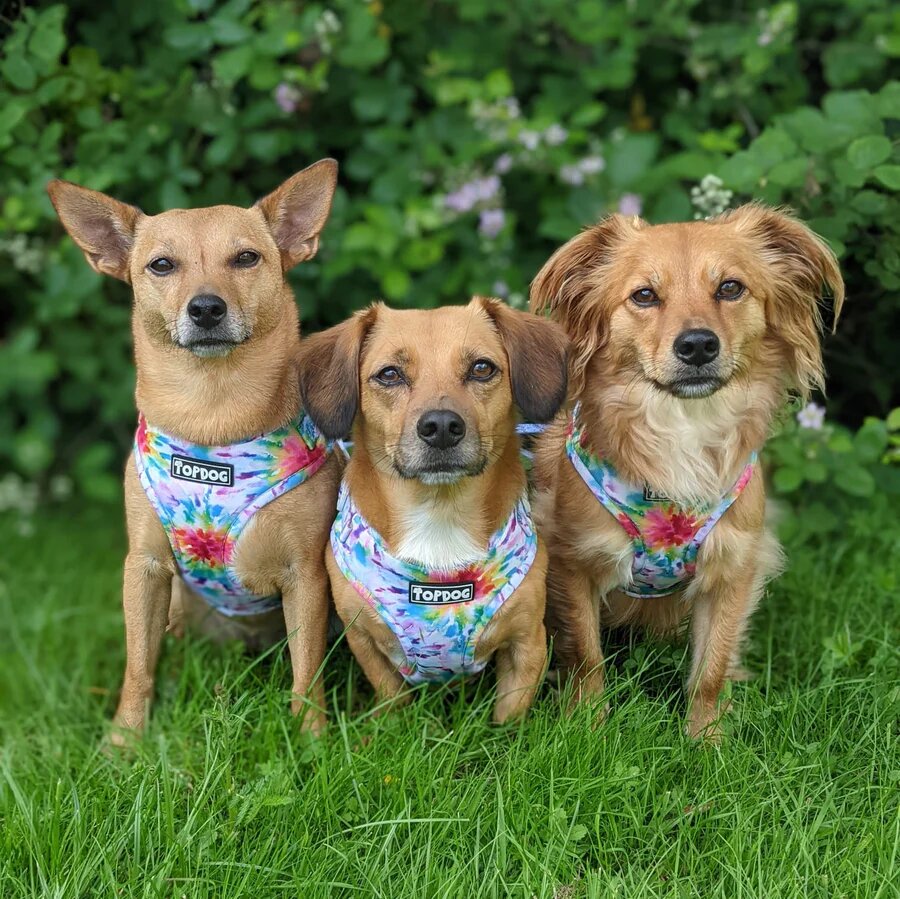Struggling to get dogs in their harnesses is just one of the many struggles faced by pup parents across the country, with many flocking to the internet for help.
Search data shows that dog owners across the UK are frequently questioning what they can do to get their dogs to wear harnesses. Search analysis tool AlsoAsked highlights these as some of the most commonly asked questions related to dog accessories online right now:
-
“Why won’t my dog wear a harness?”
-
“How to make your dog wear a harness”
-
“Why is my dog scared to put his harness on?”
The experts at TopDog understand these struggles so Terry Hearn, harness expert and TopDog owner’s guide writer, has collated some helpful steps to help dog parents:
Step one – Positive initial associations
Terry advises: “If your dog has never worn a harness before they will need time to get used to the sensation. Use treats to reassure and slowly lace the harness over their head, offering more rewards and praise while they are wearing it around their neck. Repeat the process multiple times and, if they are happy, keep extending the amount of time the harness stays on.”
“If they react negatively or show signs of stress, calmly remove the harness and begin again. Ideally, your dog should be calm when the harness is removed to avoid creating negative associations.”
Step two – Securing the harness
Once your dog is comfortable with the harness around their neck, move towards clipping up the rest of the harness, ensuring it is comfortably adjusted.
Here are some specific tips for getting the harness on:
-
Click the straps together before you put the harness on as the sound could cause alarm
-
Offer treats and praise to help build a positive association
-
Get down to your dog’s level to avoid unseen or unexpected movements
Remember that it can take a few attempts for your dog to get comfortable with having a harness put on, be patient and accept you might have to go back a step.
Step three – get your dog used to wearing the harness
Terry says: “Instead of taking your dog for a walk in its harness straight away, it is important to gradually build up the amount of time they spend in the harness, providing praise and treats when taking it on and off and slowly extending the wearing time.”
“After this, you can try some indoor play activities so your dog knows that wearing the harness means fun and allow them to get comfortable with the harness on whilst moving about.”
After a few fun sessions, you should notice a lack of resistance to wearing the harness and this will be your sign to take your dog for a walk in their nice, new harness.
Some dogs will take longer than others to get used to wearing a harness and might be happier just wearing their collar in the meantime. It is important to spend plenty of time with your dog and have patience that they will love the harness in no time.
Once you have had success, Danielle Taylor, founder of Doggy Adventures, recommends opting for quality: using a “Once your dog is fully grown, invest in a good quality harness that fits well and has a front and back loop for attaching a lead (especially for larger/strong breeds). I love using double-ended leads (clips on both ends) as these provide more control and come with options in lead length and can help with loose lead walking.”
For more information, including tips on getting older dogs to wear a harness, and why some dogs might not like them, head to the full report on TopDog’s website. You can also find out more about the pros and cons of harness wearing in a separate post.
